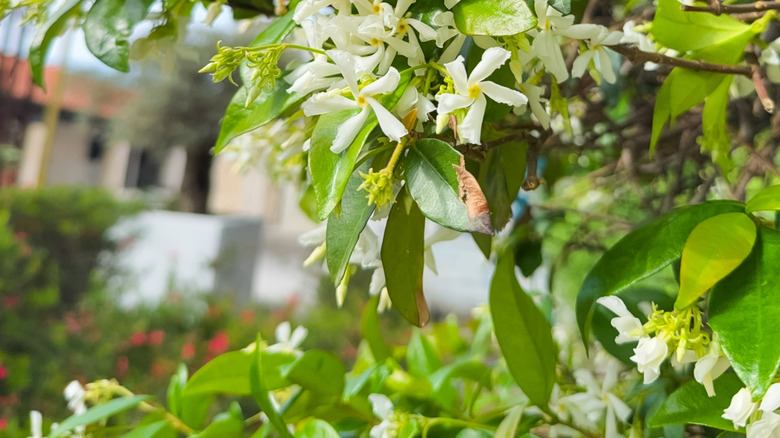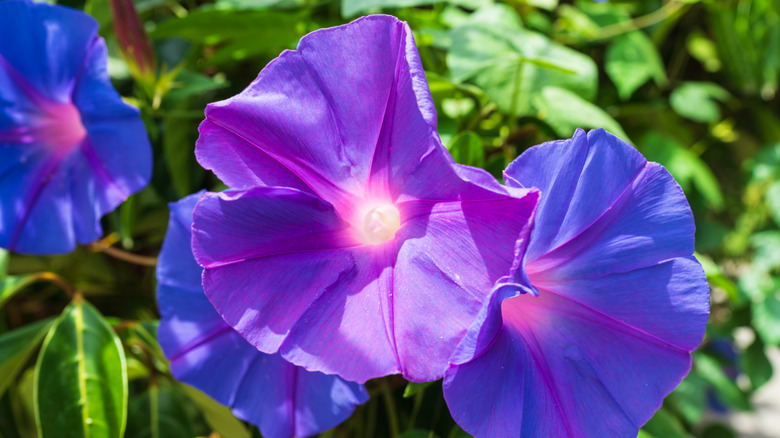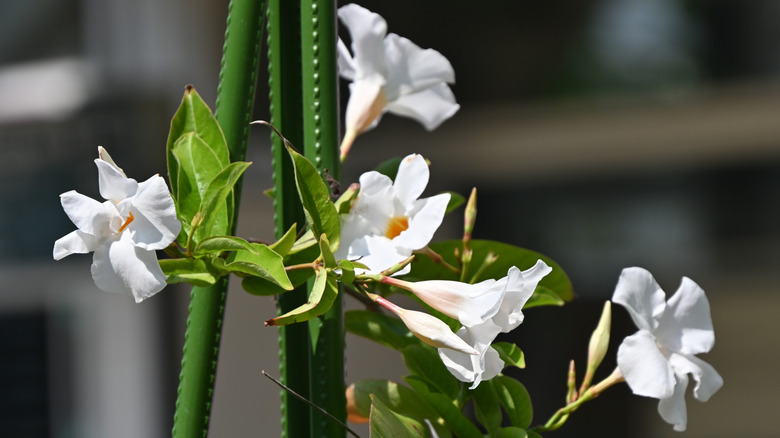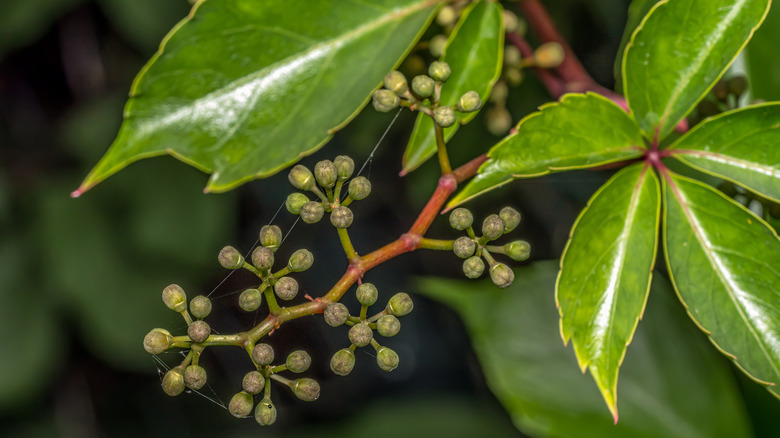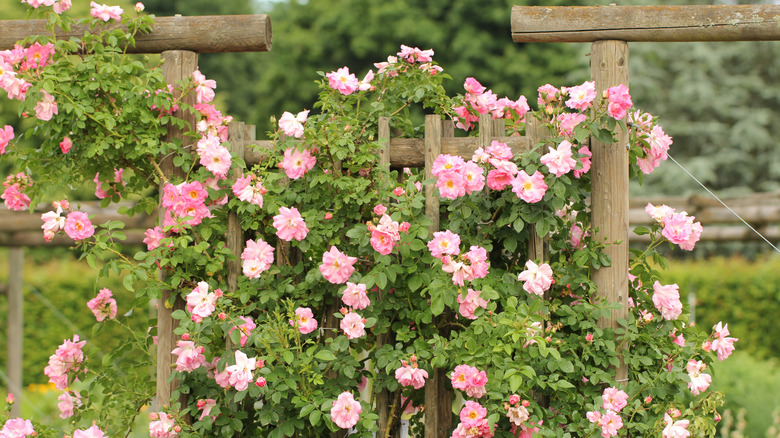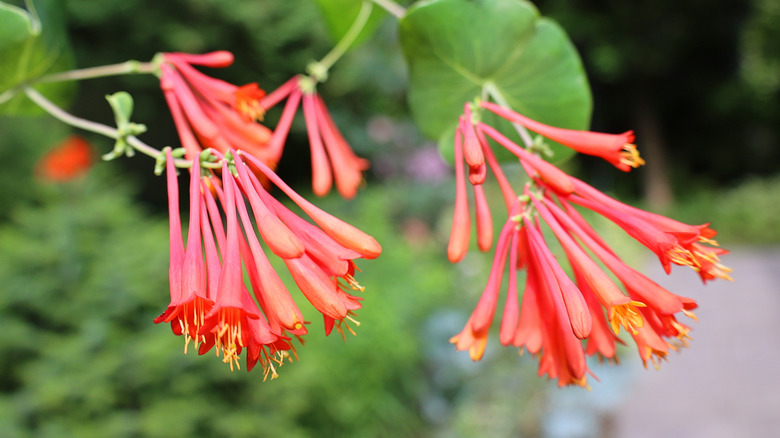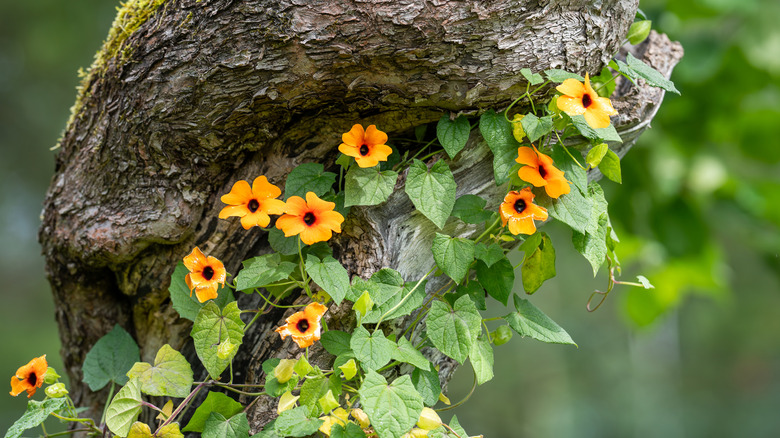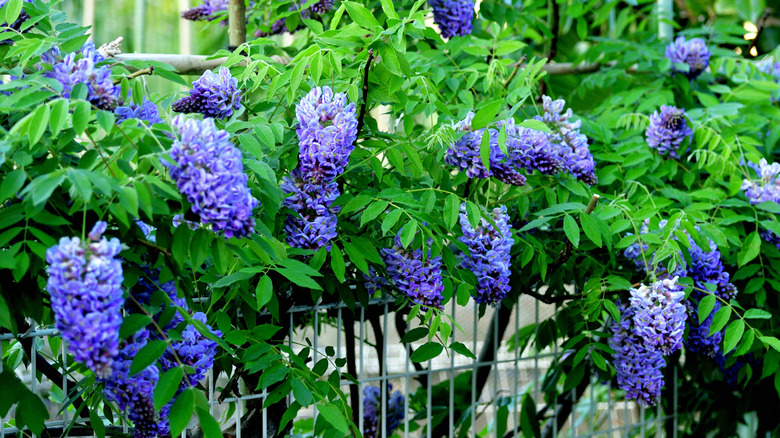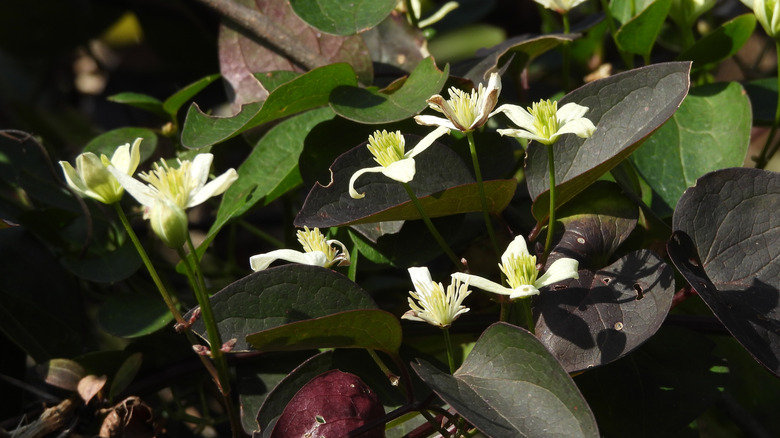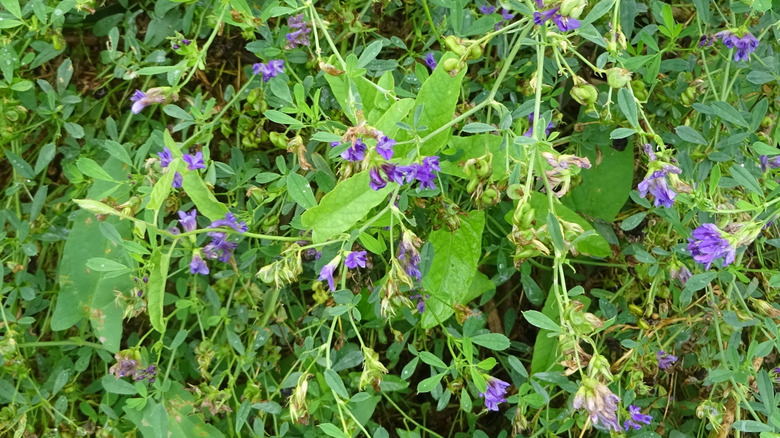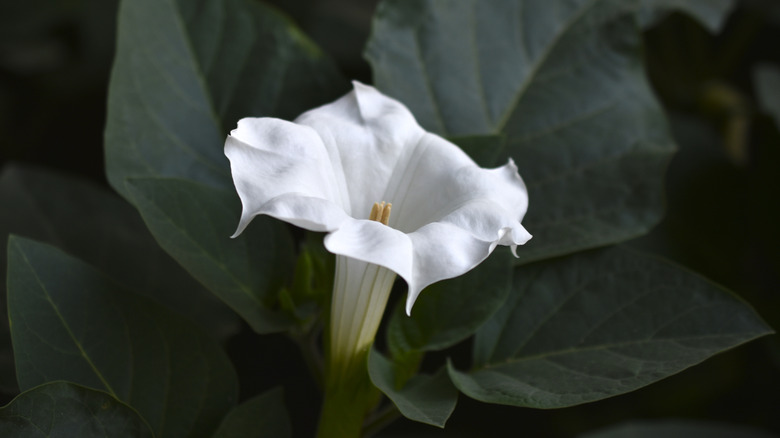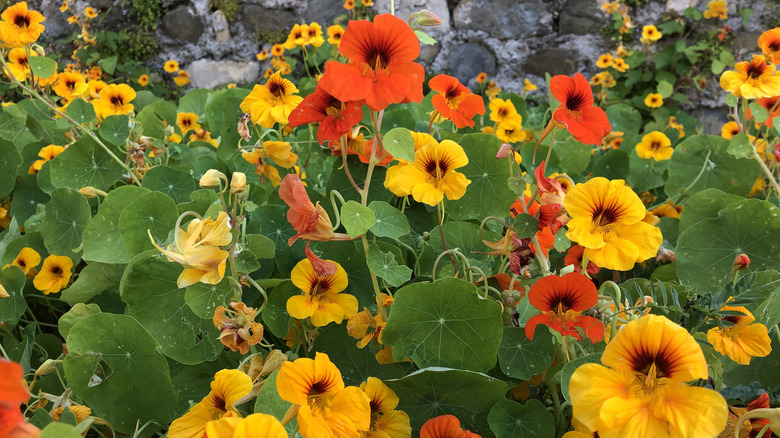12 Vines And Climbing Plants To Prune In October For A Stunning Spring Garden
As romantic as a trailing vine looks in the fall, don't neglect your climbing plants when you have your shears out to cut back other plants. Pruning vines helps them stay healthy and keep putting out new growth without sprawling out of control, so your neat, healthy garden will thank you for the extra effort. Many vines, especially of the ornamental and perennial varieties, need to be pruned to ensure they'll flourish in your garden come springtime. October is the perfect time to give them a trim.
The time to prune most vines is after their flowers are spent, which often happens in autumn. There are other good reasons October is the ideal time for the task — for one, their metabolisms are entering a slower pace for the colder months, and without excess growth, the vines can use energy for essential functions like maintaining strong roots. When you're working on the vines in your garden, remember the three D rule: target stems and other parts that are dead, damaged, or diseased. For extra protection against these nasty afflictions, cutting vertical vine stems on an angle can keep water from building up and leading to rot.
Nature is full of variation, though, and not all vines need a fall haircut. Many types of hydrangeas, for example, are a type of plant that can climb but shouldn't be trimmed in October, since you would be removing the old wood that the spring flowers bloom on. There are also times when you can skip pruning altogether, such as when you pick up a new vine from the nursery or if you're going for a rambling look with your vining plant.
Star jasmine
The fast-growing star jasmine (Trachelospermum jasminoides), which can reach 20 feet tall, puts on an impressive show when it blooms in the spring and summer. Come fall when the flowers have faded, give it a pruning so it doesn't grow out of bounds and stays in a neat shape. If you want more branching, you can give the young vines a trim, too. An added benefit of this chore is that you can collect some stems and use them to propagate new plants. This plant produces sap, so remember to clean your shears when you're done cutting!
Morning glory
One of the annual vines that can sometimes use a fall cleanup is morning glory (Ipomoea). In fact, you'll want to make sure you're not growing a type of this plant classified as noxious or invasive, like water spinach (Ipomoea aquatica), and if you are, to uproot it entirely. For the garden-safe cultivars, you can cut off as much of the vines as possible. This helps make sure they don't get overgrown and makes way for new growth in the spring, a task that's easier in October than the late autumn and winter.
Mandevilla
You'll most likely need to move your mandevilla vine inside for the winter since it can only survive the winter in USDA Hardiness Zones 10 through 11, but first you should thoroughly prune all the growth that would naturally fall off the vine during its dormant period. In October, trim this tropical climber back, stopping when you get to 12 inches from its base. The alternative is the foliage falling off inside its warm winter temporary home, so a fall pruning will save you a chaotic mess.
Virginia creeper
Although the woody vine known as Virginia creeper (Parthenocissus quinquefolia) is easy to care for, you may need to give it an October pruning to keep it from vigorously spreading too far. You'll especially want to keep it away from any wood surfaces, because the plant is hard to remove once it attaches itself there. Wear gloves when you make the cuts to keep your skin from being irritated by the sap. In addition to pruning, you can grab vines that may have started climbing where you don't want them to and give them a gentle pull.
Climbing rose
Since they bloom in the hotter months, climbing roses (Rosa) will thank you for not pruning them in summer, but come October, as long as their show is over you can snip off old canes, giving healthy ones enough light exposure to flourish next season. Lop off dead or diseased branches, tying the healthy shoots onto a trellis or other support structure. Don't wait until winter, when pruning could spur new growth instead of letting the plant conserve its strength. Stick to just cleanups rather than hard pruning in the plant's first three years.
Trumpet honeysuckle
Trumpet honeysuckle (Lonicera sempervirens) is a pollinator-attracting vine that you can give a light trim in October, but make sure you avoid growing the related gold-and-silver honeysuckle (Lonicera japonica), which is invasive. After they finish their spring and summer bloom season, you can make cuts to keep the honeysuckle neatly shaped. Take some old growth off rather than giving the vine a severe pruning. Also, leaving some faded flowers intact lets them develop into berries which feed birds. Although you can prune honeysuckle every other year, when you get around it, the task can improve its flowering.
Black-eyed Susan vine
The black-eyed Susan vine (Thunbergia alata) is a yellow-flowering climbing plant pollinators love, but in October it needs to be reined in so it doesn't encroach on other flowers. Its fall haircut involves cutting back the vine and removing dead flowers and damaged leaves. You can also cut growth back from the top and the sides to keep it in a desired shape. Black-eyed Susan vines, hardy to zones 10 through 11, will keep blooming in the winter in warm climates, but can be grown in containers and brought inside when night temperatures are below 60 degrees Fahrenheit.
American wisteria
Those who appreciate a dramatic vine can grow American wisteria (Wisteria frutescens), a native alternative which doesn't provide the same risk to local flora as Wisteria sinensis or Wisteria floribunda. Although it grows less vigorously than its relatives, this climber can still use an October pruning to control the spread. Even though it's still fall, you can do a "winter pruning" so the dormant plant will save energy and come back with more spring blooms. When you prune for the cold-weather season, start at the end of the vine and trim back to the third bud you find.
Sweet autumn clematis
The sweet autumn clematis (Clematis terniflora) is a prolific grower that can be kept in bounds by an autumn pruning. It's so sprawling that it should be kept out of your garden in the eastern United States, where it's classified as invasive in many regions. In other parts of the country, it responds well to a hard pruning after its white flowers, which tend to emerge in September, fade. These pruning sessions, which will be especially important after the plant's third year in the garden, involve cutting until you reach 18 to 24 inches below new growth.
Snapdragon vine
The snapdragon vine (Maurandella antirrhiniflora) can effortlessly blanket your yard with color all year in zones 9 through 10, and like other perennials, this vine's health can be boosted with an October pruning. Snip off dead flowers or any discolored leaves, stopping above the healthy nodes. In addition to this gentle cleanup, you can also cut off the plant's seed capsules, which may leave you with more of its purple, white, or red flowers to admire.
Moonflower
Pruning ornamental vines like moonflower (Ipomoea alba) in autumn helps keep their growth contained. This climbing plant is intriguing for its light-colored blooms that emerge at night, like the moon. October is a good time to clean it up since the plant is ending its bloom time and producing seeds, which you can collect after you get rid of any old, tired growth. In zones 10 through 12, moonflower can be grown as a perennial, and cutting the plant back to the vine before mulching the roots can set it up for abundant flowering in the spring.
Nasturtium
Whether it's winding around a tree or trailing down a wall, your climbing nasturtium (Tropaeolum majus) can use a thorough trim after a blooming period that ends in the beginning of fall. Remove any tangled stems as well as damaged, dead, or diseased bits. This will let the plant breathe and access light. You can also deadhead the spent flowers during this time so some straggling blooms can come out before the cold season. Although the plant dies to the ground in freezing weather, you can harvest its edible leaves and flowers during your annual fall cleanup.

